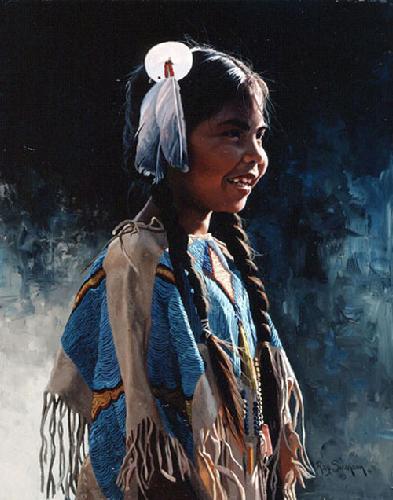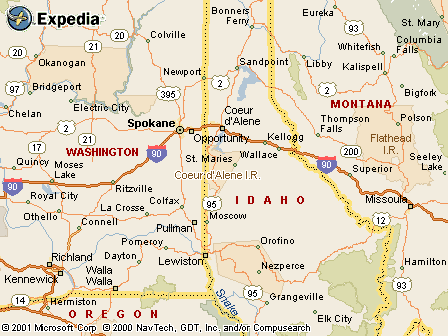|
|
Canku Ota |
|
|
(Many Paths) |
||
|
An Online Newsletter Celebrating Native America |
||
|
August 25, 2001 - Issue 43 |
||
|
|
||
|
Indian Youths Carrying Traditions into Future |
||
|
by Jeanne Givens-written in the Spokesman Review-August 11, 2001 |
 Hundreds
of proud, young Indians danced before the crowd of 20,000 spectators at the Julyamsh Powwow. Hundreds
of proud, young Indians danced before the crowd of 20,000 spectators at the Julyamsh Powwow.Young boys danced in the fancy, traditional and grass styles. Young girls danced jingle dress, traditional and shawl dances. It was spectacular, colorful and deeply moving. Watching young Indians dance touches the soul because one realizes how proud they are of their culture. In the wave of the pervasive desire for all young people to be the same, many Indian youth rise to the dreams of their parents and celebrate their uniqueness. They are dressed in buckskin, beaded vests and moccasins, feathers and fans that were handed down from generation to generation. Today, young Indian people are hard-wired to be strong in spirit, proud of their heritage and tough-minded in defending it. Guided by parents, grandparents and elders inspired by their ancestors to be strong and proud, young Indians carry on an attitude and tradition that will move onto future generations. Inner strength is needed. The world has not progressed to embrace the cultural differences. The separateness, the standing apart of minorities is evidenced throughout every strata of society. Lack of minority, not only Indian, representation in elective office, in advertising, in most areas of civic leadership, is a sad fact in most Idaho communities. So little Indian history and culture is reflected within the public school system. To be strong in the face of few role models or examples takes a leap of faith. Indian leaders believe it will get better. More Indian students today are in college than any other time in history. The Coeur d'Alene Tribe experiences economic success through its business ventures. Many non-Indian people turn to Indian thinking and philosophy as touch stones in their lives. Crowds of 20,000 every night of a weekend to watch Indian dancing is heart warming as well as a good start for understanding. They heard the drums, experienced the food and art, and shared some fun moments with Indians from across the country at Julyamsh. Idaho has proclaimed itself The Human Rights State. Many Indians wonder how this could be when there are still so many place names with the degrading word squaw in their names, or when few leaders stand up to the racist Jurisdictional Alliance whose main goal is to undo all Indian treaty rights. With no diversity programs in the schools to educate young people, a disconnect is made by this proclamation. When average, educated Idahoans continue to make disparaging remarks about Hispanics, African Americans as well as Indians, it causes one to wonder. There is a new idea exploring why major change takes place in our society. It's called the Tipping Point, based on a book by Malcolm Gladwell. What causes people to suddenly behave differently? It explores how ideas become sweeping trends that move society in different directions. Could we expect that one day society will evolve to the point of eliminating racism? Many Indians wait for the day when racist remarks and attitudes will be rooted out of existence because they are grossly passe. There will be a day when different cultures will be honored and welcomed. It is unclear how or when, but it will begin with young people who are simply content with who they are. For Indians, the tipping point will originate with the next generation of young dancers as leaders into this greater future world. |
|
|
|
Julyamsh |
|
|
||
|
|
||
| Canku Ota is a free Newsletter celebrating Native America, its traditions and accomplishments . We do not provide subscriber or visitor names to anyone. Some articles presented in Canku Ota may contain copyright material. We have received appropriate permissions for republishing any articles. Material appearing here is distributed without profit or monetary gain to those who have expressed an interest. This is in accordance with Title 17 U.S.C. section 107. | ||
|
Canku Ota is a copyright © 2000, 2001 of Vicki Lockard and Paul Barry. |
||
|
|
|
|
|
The "Canku Ota - A Newsletter Celebrating Native America" web site and its design is the |
||
|
Copyright © 1999, 2000, 2001 of Paul C. Barry. |
||
|
All Rights Reserved. |
||

